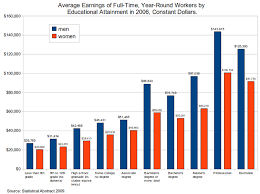We’ve all been lectured with the importance of education. Knowing that without an education, getting a job nowadays is near impossible. Education is highly valued in the workforce, and represents a lot about a person’s character, and ability to function in reality.
 Getting into college is challenging, it is not just handed to you; but even if you work hard all throughout high school you still may not receive the acceptance letter that you deserve. What decides if you get into college nowadays? What is that factor that pushing you to getting in over someone else? Are admissions looking at GPA, SAT scores, essays, everything combined, what is more heavily weighted?
Getting into college is challenging, it is not just handed to you; but even if you work hard all throughout high school you still may not receive the acceptance letter that you deserve. What decides if you get into college nowadays? What is that factor that pushing you to getting in over someone else? Are admissions looking at GPA, SAT scores, essays, everything combined, what is more heavily weighted?
It is tough to know what helps you get into college; I work for admissions here at Penn State and the criteria that sets a student apart varies drastically. When a parent or student asks me what they need to do to get in, I say generate a strong application, and hope for the best because it is hard to tell what will push you to the top of the list.
Colleges that were once considered “safety” schools have now dropped their acceptances as low as 20-30%. This is unsettling to know that if you have the same qualifications as another person, you are not accepted because of your race, ethnicity, or income background. An article written by the Heritage foundation addresses the concern of students being emitted into college because of their minority background, “Abigail Fisher argues that the school’s policy of giving racial preferences to preferred minorities is discriminatory and violates the Equal Protection Clause of the Fourteenth Amendment.” It is understandable that colleges look to diversify their campus, and select a class that promotes diversity, but comments such as she got in because she is a minority should not be the deciding factor of who gets in and who gets denied.
 Not only is minority selection a problem with admissions, income inequality is prevalent, and prominent in recent college acceptance studies.
Not only is minority selection a problem with admissions, income inequality is prevalent, and prominent in recent college acceptance studies.
“Students from high-income families are eight times more likely to get bachelor’s degrees by the time they’re 24 than those from low-income families.”
“Historically, colleges and universities served as a great “equalizer” by providing gateways for social mobility for the poor.” The student affairs administrators in higher education share their take on what changes admissions is portraying in their acceptance today. Students in lower income families are not receiving equal opportunity in the admissions process. There are various arguments as to why, perhaps the environment is which they grew up did not harvest their abilities to get into college. However, college was not as competitive in previous decades, and it opened doors for everyone to have the opportunity to obtain a higher education. Now it seems as though if you are not coming out of a wealthy private school, or middle class family and above getting into college is a lot more challenging. The income gap seen in admission rates in recent years is large.
“It’s not about academic ability. The lowest-income students with the highest scores on eighth-grade standardized tests are less likely to go to selective colleges than the highest-income students with the lowest test scores, according to the Education Trust” this is disturbing to think that in this day and age we select people because of their money, not because of their intellect.
 When I tour around students and parents, it becomes difficult to determine what will actually get their student in because inequality in admissions is high and prevalent today. Average tuition rates have doubles since 1970, and are continuing to go up. This makes it hard for students to pay for the college of their choice unless they are making a large sum of money. Even for wealthy family’s college tuition is unreasonable.
When I tour around students and parents, it becomes difficult to determine what will actually get their student in because inequality in admissions is high and prevalent today. Average tuition rates have doubles since 1970, and are continuing to go up. This makes it hard for students to pay for the college of their choice unless they are making a large sum of money. Even for wealthy family’s college tuition is unreasonable.
It is apparent that minority profiling and a large income gap make college harder to get into (if it is not hard enough already). I guess if someone asks me what they should do to get into the college of their dreams is to not have one set college in mind. Getting into the top college of your choice is undeterminable, and it is better to apply to a wide-range of universities to guarantee acceptance nowadays. Admissions changes every year, and research shows that it is getting harder to get into any school today, and certain qualifications that set people a part are sometimes not attainable for others. Therefore, it is not about being the smartest person in high school, or getting a perfect SAT score, it is about what the college is looking for that year. Whether it is a class of wealthy students, or a class that is predominantly minority, this is not something one can control; inequality is present and continues to rise as applications come in every year.
http://www.huffingtonpost.com/william-h-schmidt/educational-inequality-system_b_1679243.html
https://www.naspa.org/publications/journals/posts/favoring-wealth
http://www.theatlantic.com/education/archive/2015/06/inequality-public-schools/395876/

